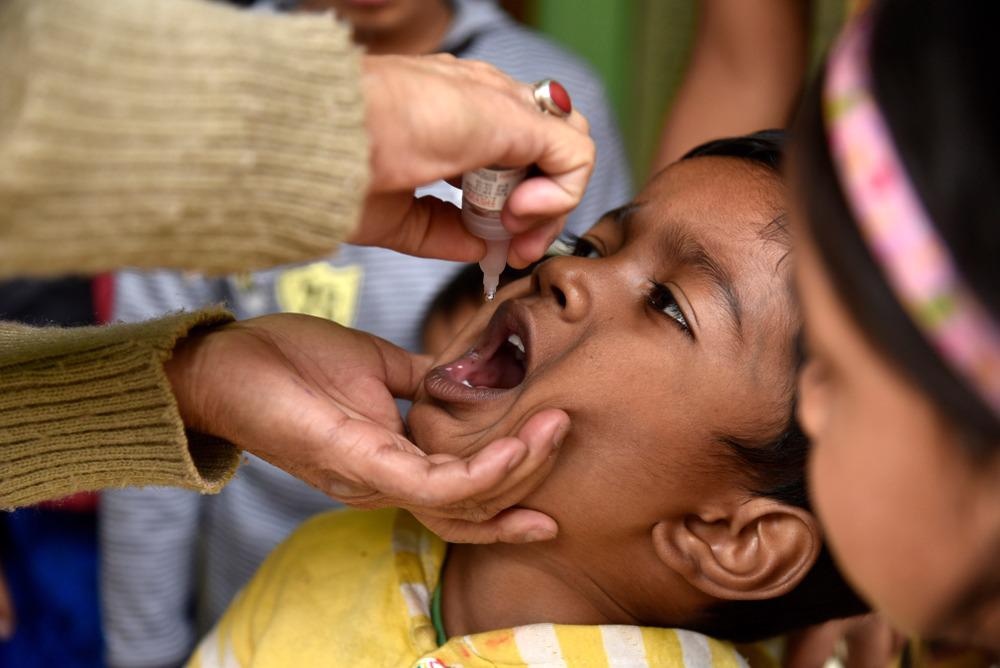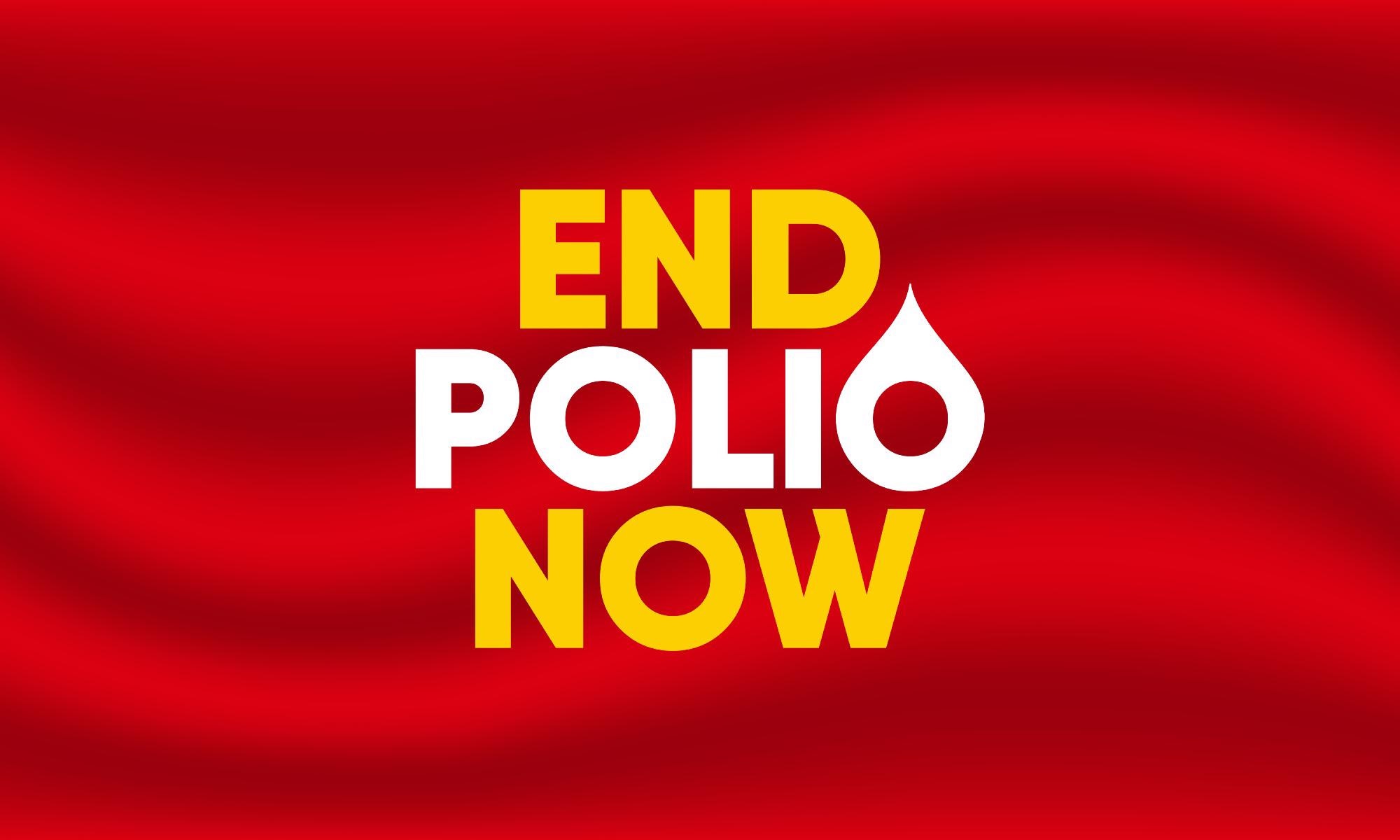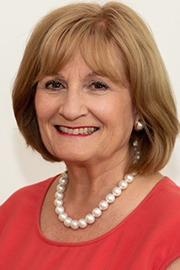In this interview, we speak to Judith Diment from Rotary’s International PolioPlus Committee about the incredible work they are doing to help eradicate polio worldwide and what this would mean for global health as well as how people can get involved and raise awareness too.
Please could you introduce yourself and tell us about your role within Rotary International?
Certainly. Broadly, I have helped shape Rotary’s polio eradication advocacy efforts in the UK for more than 20 years.
More specifically, I am the coordinator of Rotary International’s National Advocacy Advisers and am the UK National Advocacy Adviser for polio. I’m also a member of Rotary’s International PolioPlus Committee (IPPC).
Finally, I serve as Dean of the Rotary Representative Network. The Rotary Representative network consists of Rotary “ambassadors” to 22 international organizations, including the United Nations (UN). Our goal is to meet with and develop relationships with key leaders at each organization to collectively work together on initiatives that fall within the cause areas that Rotary supports, including polio.
Rotary International is an international service organization that has been aiming to eradicate polio for more than 30 years. Can you tell us more about Rotary International and some of its aims and missions?
For more than 30 years, Rotary has been the driving force in the worldwide polio eradication effort, and polio eradication remains our top corporate priority. Polio eradication is one of the most ambitious global health initiatives in history, and polio will be only the second human disease in history to be eradicated (following smallpox).
Rotary is a 1.4 million-member-strong global network of friends, leaders, and problem-solvers who work together to promote health, peace, and prosperity around the world and deliver sustainable solutions to the world’s most persistent issues.
For example, regarding health, in addition to the $2.4 billion and countless volunteer hours Rotary and its members have contributed to fighting polio to date, we also have provided more than US$51 million in grants for projects related to COVID-19. Our members have donated supplies, sourced PPE, supported hospitals and health workers, and highlighted the efficacy of vaccines.

Image Credit: Talukdar David/Shutterstock.com
Polio is a vaccine-preventable disease yet millions of children are still at risk from Polio every year. Why is this and how has the ongoing COVID-19 pandemic affected polio vaccinations?
Yes, this is true, and in the decades since Rotary launched its proprietary mass polio immunization program, PolioPlus, in 1985 and became one of the founding members of the Global Polio Eradication Initiative (GPEI) in 1988, we have repeatedly stressed that polio anywhere is a threat to children everywhere.
Yet, Rotary and our GPEI partners--including the World Health Organization (WHO), the U.S. Centers for Disease Control and Prevention (CDC), UNICEF, the Bill & Melinda Gates Foundation, and Gavi, the Vaccine Alliance—have made great strides as we’ve reduced polio cases by 99.9%. And in August 2020, the WHO’s African region was certified wild poliovirus-free, and now only Afghanistan and Pakistan remain endemic. When the GPEI was launched in 1988, there were 350,000 cases of wild polio each year in 125 countries. In all of 2021, just six children were paralyzed by the wild poliovirus.
Despite this progress, we recognize we have more work to do, and we acknowledge that the COVID-19 pandemic has impacted global routine immunization efforts, of which polio vaccination is a critical part. According to WHO/UNICEF data, “[1]23 million children missed out on basic vaccines through routine immunization services in 2020” because of the pandemic.
Outside of routine immunization, polio immunization activities were initially put on hold at the beginning of the pandemic in outbreak and endemic countries even as critical activities such as surveillance continued. Polio immunization efforts resumed in these countries in July 2020 in line with protocols to protect both frontline workers and the communities they serve (i.e. screening of vaccinators for symptoms of COVID-19, regular handwashing, provision of masks, etc.).
What’s more, the pandemic has also impacted polio resources. The polio infrastructure that Rotary members helped build—from contact tracing to disease surveillance to data collection—has been deployed to help fight COVID-19. And donors and governments (including the UK) have directed their financial and human resources to the COVID-19 response.
So now donors, governments, nonprofits, NGOs, and all parties must recommit to prioritizing polio eradication efforts to protect the progress made and to eliminate the wild poliovirus in Afghanistan and Pakistan. With such continued support, we are confident that we can beat polio for good.
The global efforts to eradicate polio is the largest international public health effort observed with many organizations including the WHO, UNICEF, Gavi the Vaccine Alliance, and the Bill & Melinda Gates Foundation supporting this. How important is this international level of collaboration to the eradication of polio?
International collaboration among the Global Polio Eradication Initiative (GPEI) partners and local and national governments is critical to the eradication of polio. As noted in the response to the previous question, Rotary helped form the GPEI with the World Health Organization, UNICEF, and the U.S. Centers for Disease Control and Prevention. The Bill & Melinda Gates Foundation and Gavi, the Vaccine Alliance later joined, and all partners have various areas of expertise that contribute to the eradication of polio. Rotary’s role in the GPEI is fundraising, advocacy, raising awareness, and mobilizing volunteers; the World Health Organization (WHO) coordinates the strategy, management, and administrative processes of the GPEI; the U.S. Centers for Disease Control and Prevention (CDC) conducts research and supplies scientific and technical expertise to the GPEI; the United Nations Children’s Fund (UNICEF) procures and distributes polio vaccines and leads on community engagement; the Bill & Melinda Gates Foundation contributes technical and financial resources and galvanizes fiscal and political support for polio eradication efforts; and Gavi, the Vaccine Alliance focuses on funding for and ensuring the supply of vaccines for lower-income countries.
How to Talk to Someone Who is Vaccine Hesitant
The polio program also aims to combat vaccine hesitancy and misinformation surrounding the virus. What do you believe to be some of the biggest misconceptions surrounding polio and vaccinations and how are you helping to educate people on these issues?
Rotary and our Global Polio Eradication Initiative (GPEI) partners are compelled to combat vaccine hesitancy and misinformation as our efforts to eradicate polio have only been successful because of vaccinations.
In fact, the World Health Organization (WHO) estimates that vaccines save between 2 to 3 million children’s lives each year, and the Global Polio Eradication Initiative (GPEI) estimates the polio vaccine has saved 20 million children from paralysis.
Nevertheless, the program has battled misinformation and distrust of polio immunizations, ranging from general wariness to those who believe polio vaccines cause sickness [2]or even infertility.
We’ve learned that the key to combatting vaccine hesitancy is through building goodwill and trust, and we do so in several ways.
For example, we engage women[3] as community mobilizers and frontline health workers. These individuals are well known in the communities they serve and build trust with parents (and particularly mothers) by not only raising awareness about the safety and efficacy of the polio vaccine, but by also providing other health and wellness information and services related to nutrition, prenatal care, and more.
We also work with traditional and religious leaders to help address vaccine hesitancy and dispel misinformation in culturally appropriate ways. For example, in Pakistan, Rotary’s National PolioPlus Committee hosts workshops with these leaders to highlight the importance of polio immunizations and address any related concerns. In turn, these leaders assure vaccine-hesitant parents that polio immunizations are safe and in line with Islamic principles and practices.
Lastly, Rotary and its GPEI partners work to provide communities with the broader health services and infrastructure they need (such as clean water) as a complement to polio immunization to build community trust and increase vaccine acceptance—this is what Rotary calls the [4]“plus” in PolioPlus.
Every year, the world celebrates World Immunization Week which takes place from the 24-30th of April. The theme for this year is ‘Long Life for All.’ Why is it important to help raise awareness of vaccines and what does this year's message mean to Rotary International?
Vaccines and vaccinations are the underpinning of the Global Polio Eradication Initiative’s (GPEI’s) efforts and have proven to be one of the greatest advances of modern medicine, and World Immunization Week offers Rotary and our GPEI partners a wonderful opportunity to raise awareness of the benefits of vaccines.
During World Immunization Week, Rotary works to raise awareness about polio eradication and the importance of vaccines at large, as we believe “Long Life for All” can be achieved, in part, through immunization.
We’re calling on our members and the public to join us in promoting the power of vaccines to protect children and save lives, and we encourage your readers to visit endpolio.org to learn what they can do to support the fight to eradicate polio.

Despite progress being seen concerning Polio vaccination, more still needs to be done. What action do you believe needs to be taken before Polio can be eradicated worldwide?
Yes, there is certainly more work to do. The most pressing challenges to polio eradication include difficulty reaching children in conflict zones, weak health systems (that result in unimmunized or under-immunized children), and other operational risks.
The Global Polio Eradication Initiative’s (GPEI’s) [5]2022-2026 strategy outlines the steps Rotary and our partners—including governments—must take to end polio for good, and is built in part on the idea of being more responsive and adaptive to local realities.
This means further integrating polio immunization into routine immunization and other health services; further engaging female workers to build community trust and improve vaccine acceptance (see the response to question number five); advocating for and improving accountability among stakeholder governments; and improving the impact and efficiency of polio campaigns by rolling out new tools, such as digital payments, to help retain frontline health workers.
And, although we’ve made incredible progress against wild polio, Rotary and our GPEI partners must continue to address circulating vaccine-derived polioviruses (cVDPVs), which occur if the weakened strain of the poliovirus contained in the oral polio vaccine (OPV) circulates and reverts to a form that can cause polio in under-immunized populations.
To combat the most prevalent type of cVDPV, type 2 (cVDPV2), GPEI partners are working with countries to deploy a more genetically stable version of an OPV called novel oral polio vaccine type 2 (nOPV2), which is designed to help stop cVDPV2 outbreaks. This version of the vaccine offers strong protection against poliovirus in low-immunity settings, and so far, several countries, including many across [6]Africa, have conducted nOPV2 immunization campaigns.
On your site, you help to encourage people to make a difference and support your campaign by using ‘3 Actions. 3 Minutes.’ Can you tell us more about this initiative and how it is helping to encourage more people to learn about Polio?
The ‘3 Actions. 3 Minutes’ campaign on endpolio.org is Rotary’s ask for everyone to support polio eradication through quick and simple actions. The point is that everyone can help make a difference, whether by sharing polio facts (and driving awareness about polio) in their community, sharing these same facts on social media (to help further spread awareness) or donating.
Thanks to a matching agreement with the Gates Foundation, every dollar Rotary raises for polio eradication is matched 2-to-1, up to $50 million per year, meaning that with donor support, there’s a total of $150 million for polio eradication activities annually.
The ongoing COVID-19 pandemic has highlighted that when agendas are aligned, scientific advancements can be made at an incredible pace. How can we use some of the lessons learned from the pandemic, specifically concerning global vaccination, to combat Polio?
I would like to reframe this question and instead suggest that lessons learned from polio are being used to combat COVID-19.
As earlier noted in the response to question number three, the polio infrastructure that Rotary members helped build has already been used to fight COVID-19. From contact tracing to disease surveillance and data collection in Pakistan, Afghanistan, Nigeria, and many other countries, polio resources have already been directed to address the global pandemic.
What’s more, Rotary’s COVID-19 task force (created in December 2020) asks Rotary’s 1.4 million members around the world to continue to proactively reach out to their local health authorities to find out how they can best support local COVID-19 immunization efforts as well as continue to help stop the spread of the virus.
Member support activities have taken many forms (please see the response to question number two), and activities--ranging from sharing factual information about vaccines to promoting vaccine acceptance to combatting vaccine misinformation to helping to distribute COVID-19 vaccines--are very much in line with how members have supported polio eradication in polio-endemic and at-risk countries.

Image Credit: The Creative Guy/Shutterstock.com
Are you hopeful that one day we will see a world without Polio? To you, what would this mean for global health?
Indeed, I am extremely hopeful that we will one day soon achieve a world without polio. As noted in the responses to questions number three and seven, I am confident that we can beat polio for good, and Rotary is working with our GPEI partners to implement the tactics outlined in the 2022-2026 polio eradication strategy to that very end.
Once we reach that day, the infrastructure that Rotary and its GPEI partners built to eradicate polio will continue to be repurposed to address other global health challenges, and the tools, resources, and networks we developed will continue to protect countless children from other diseases.
As noted in the response to question number three, the polio infrastructure is already being used to address COVID-19, and it has also been used to help fight Ebola, yellow fever, and Avian flu; and deliver measles vaccines, Vitamin A supplements, anti-malarial bed-nets, and much more.
Looking to the future, are there any exciting upcoming projects that you are involved in at Rotary International?
I am working with a Rotary team on a $140,000 global grant project to train health workers in Kenya, with regard to COVID-19, using innovative technology. Additionally, I am working with the Commonwealth Secretariat preparing for the Commonwealth Heads of Government in Kigali, Rwanda in June. Efforts will include advocacy for polio eradication, a partnership with the Commonwealth Blue Charter team to plant mangroves in more than ten Commonwealth countries; and supporting a program to help young people, especially mentoring and empowering young women.
I am chairing a session on polio eradication at a Regional World Health Summit in Rome in June and participating in a breakout session on polio eradication at the Rotary International Convention in Houston, Texas in June.
As a member of the Rotary Programs of Scale Committee, I am excited to see the announcement at Rotary’s Houston Convention of the 2022 winner of the $2 million Program of Scale Grant.
Where can readers find more information? Please provide links to any materials that may be relevant to our audience.
I encourage your readers to visit endpolio.org to see how they can join Rotary to help end polio for good.
Your readers are also welcome to follow me as well as Rotary’s polio handle on Twitter to stay up to date on polio-related news, information, and related Rotary happenings: @RotaryEndPolio and @EndPolioNow.
About Judith Diment MBE
Judith Diment, MBE is the coordinator of the polio eradication advocacy task force at Rotary International, U.K. National Advocacy Adviser for polio, and serves on Rotary's International PolioPlus Committee.
For more than 20 years, she has advocated for polio eradication and organized many polio advocacy and media events at the Houses of Parliament and the European Parliament.